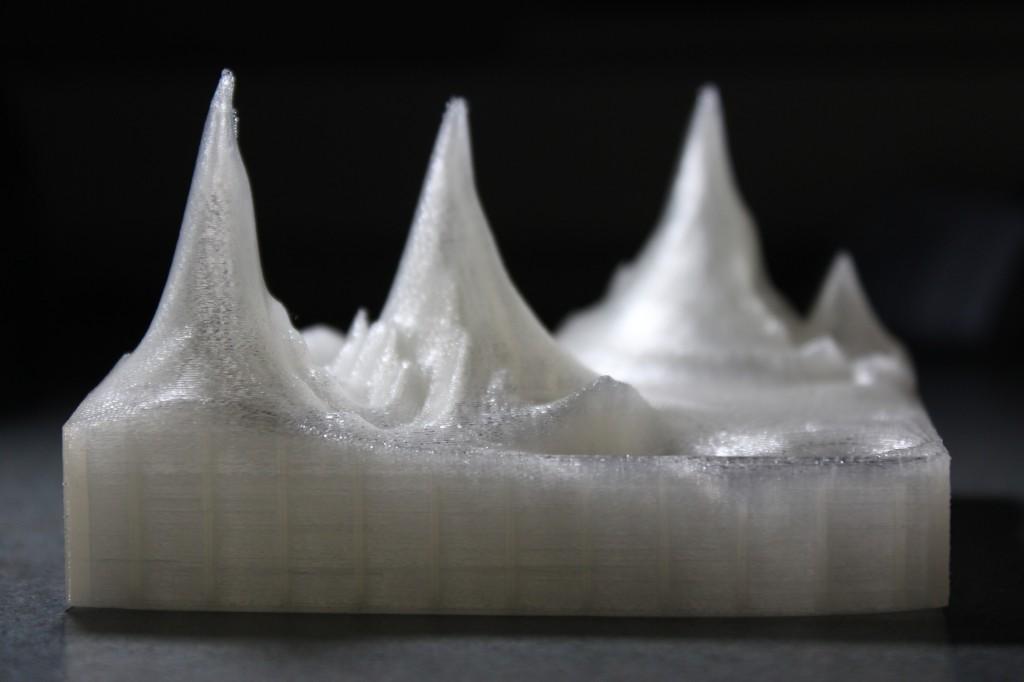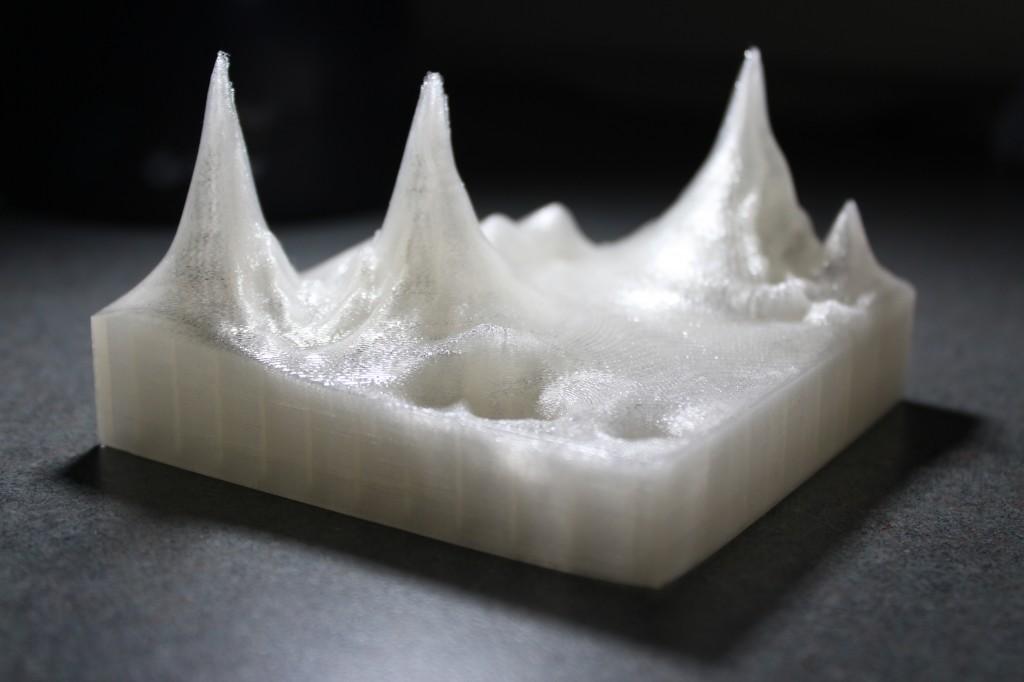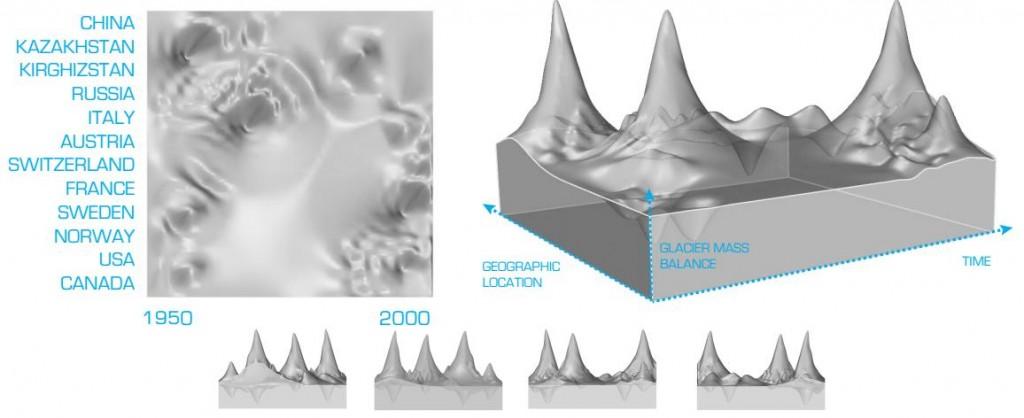 3D Printing has plenty of uses. If you frequent this very site, you will learn of new uses on a daily basis. One of the great things about the technology is that it allows us to get a clearer picture of 3-dimensional objects, buildings and people. While it is a very useful technology in creating interesting products, we are seeing it utilized more and more in the visualization process to help us better understand both nature and data. We’ve seen it used to show a 3-dimensional representation of earthquakes, hurricanes, and other forms of data in the recent past.
3D Printing has plenty of uses. If you frequent this very site, you will learn of new uses on a daily basis. One of the great things about the technology is that it allows us to get a clearer picture of 3-dimensional objects, buildings and people. While it is a very useful technology in creating interesting products, we are seeing it utilized more and more in the visualization process to help us better understand both nature and data. We’ve seen it used to show a 3-dimensional representation of earthquakes, hurricanes, and other forms of data in the recent past.
One graduate architecture student, studying at the University of Illinois at Urbana-Champaign, named Angela Ng has come up with yet another way of using 3D printing for the visualization and understanding of both nature and the data formed by nature.
She is using a MakerBot Replicator 2 3D printer to print out 3-dimensional representations of both the effects of land-ocean temperature on glacier mass balance, as well as the organizational systems of three different biological forms: Lily of the Valley, Rhodotus Palmatus, and Maze Coral.
“The point of these investigations is to explore how data and biological forms can inform architectural design,” Ng told 3DPrint.com. “Since data is becoming a big thing nowadays, it’s worthwhile to investigate how architects can design using data. It’s also worthwhile to explore the organizational systems of biological forms because they teach us how architecture can be organized in terms of circulation, structure, and adaptability.”
We’ve seen world renown architect, designer, and professor Neri Oxman use the combination of 3D printing and nature to create some truly revolutionary works of art, such as her Gemini Chair, among many other interesting pieces. Ng, however, isn’t using 3D printing to create works of art, but instead is using it as a research tool to better understand how the world’s best architect, nature, builds the earth’s own designs and species.
 3D printing has been around for several decades, but only recently has it become a tool accessible to almost anyone. The technology takes the entire visualization process of traditional virtual 3D models to a whole new level.
3D printing has been around for several decades, but only recently has it become a tool accessible to almost anyone. The technology takes the entire visualization process of traditional virtual 3D models to a whole new level.
“It’s one thing to see the 3D model on your computer screen, but it’s something else when you can physically hold the 3D printed model,” explained Ng. “What I loved about the glacier model was that it actually turned out to look like ice/glaciers. It’s reflective and fluid, which was made possible by using clear PLA. The peaks and valleys show the glacier mass balance over time in different geographical locations. I’ve attached some photos of the model and some diagrams here for further explanation.
In researching and studying the effects of land-ocean temperature on the glacier balance here on Earth, through use of her own 3D prints, Ng was able to extract the following information:
- Land-ocean temperatures have been rising at an increasingly faster pace over the past half century, regardless of the geographical location.
- In relation to this increase in land-ocean temperatures, glaciers have been decreasing in mass balance for the most part.
- An exception is in the Arctic Circle, where glacier mass balance has increased over time in Norway and Sweden.
At the same time she feels like the 3D representation also has the ability to influence architectural design. Perhaps a larger influence would be the other 3D prints that she made, of various species that we find in nature. The species that she focused on were the Lily of the Valley, Rhodotus Palmatus, and Maze Coral, all of which feature many unique structures within themselves, making them great examples for architectural design.
What do you think? Is 3D printing a better tool for learning about nature and how to incorporate it into architecture, than that of 3D models on computer screens and photos in text books? Discuss in the 3D Printing of Nature forum thread on 3DPB.com.
Subscribe to Our Email Newsletter
Stay up-to-date on all the latest news from the 3D printing industry and receive information and offers from third party vendors.
You May Also Like
NSF Awards Kentucky $1M for Advanced Manufacturing
The National Science Foundation has awarded a $1 million grant to the University of Louisville for the Advancing Manufacturing and Building Construction Technologies (NSF AMT) project. This initiative is part...
3D Printing News Briefs, May 11, 2024: 3D Printed Stent, Tower, Sculptures, & More
We’re starting off with medical research in today’s 3D Printing News Briefs, as researchers in Korea used CT images and 3D printing to fabricate an educational simulator for a mastoidectomy....
3D Printing Unpeeled: Wind Turbines, Probiotics and Lenses
TPI Composites, ORNL and Ingersoll Rand are working to make wind turbine tooling segments that can be 18.3 meters long. These elements also include resistive wires that help keep the...
Tethon 3D Releases Cost-effective Bioprinter
Tethon 3D, known for its ceramic-loaded DLP materials, custom resins, and DLP 3D printers, has recently released a bioprinter. Vat polymerization printers like DLP systems have been widely used by...




































